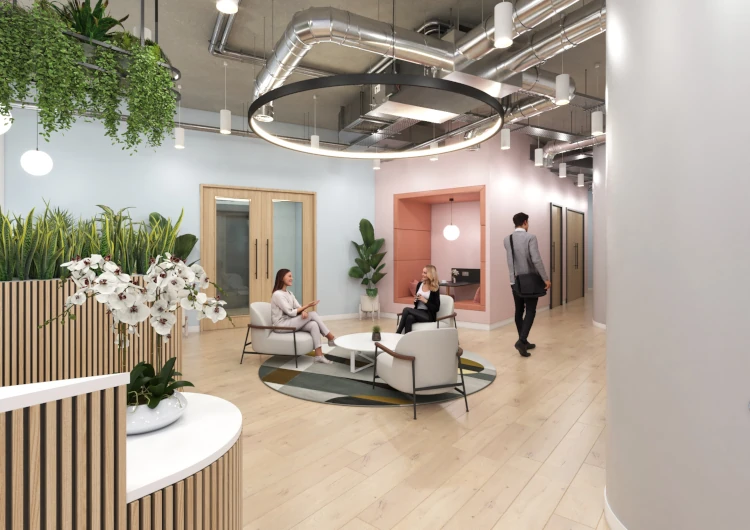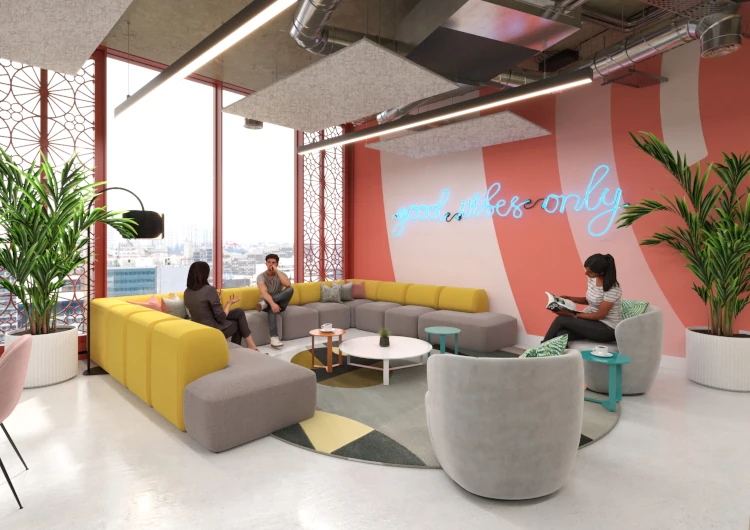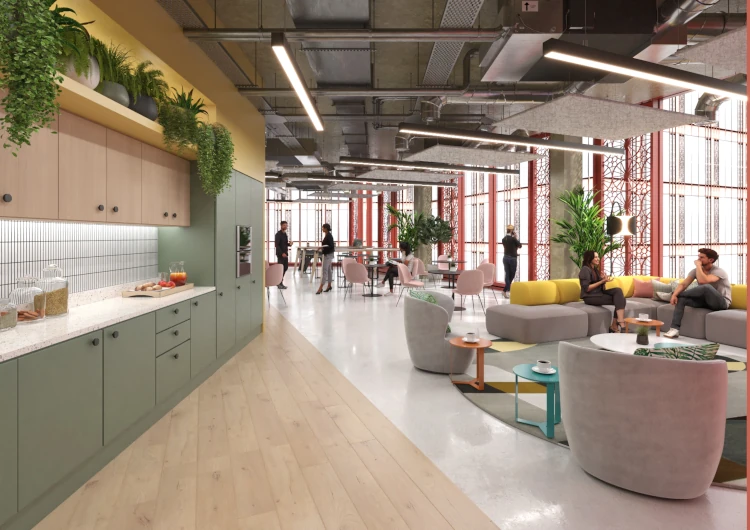The Future Evolution of Office Space Design
04/04/24< Back to news index

In the wake of technological advancements, changing workforce demographics, and the recent global shift towards remote work, the landscape of office space design is undergoing a significant transformation. The future of office spaces is not just about physical structures but revolves around creating environments that foster collaboration, creativity, and well-being while embracing flexibility and adaptability.
Gone are the days of rigid cubicles and isolated workstations. Instead, modern office spaces are designed with versatility in mind, offering a variety of work settings to accommodate different tasks and work styles. Open floor plans with modular furniture facilitate seamless transitions between individual work, group collaboration, and social interaction. Flexibility is key, with movable partitions and furniture allowing for easy reconfiguration of spaces to meet evolving needs.

Technology plays a central role in shaping the future of office design. As digital connectivity becomes ubiquitous, workplaces are integrating smart technologies to enhance efficiency and productivity. IoT-enabled sensors monitor environmental factors like lighting, temperature, and air quality, optimizing conditions for employee comfort and well-being. Virtual reality (VR) and augmented reality (AR) are also revolutionizing office design, enabling immersive simulations for space planning and design visualization.
Moreover, the rise of remote work has prompted a re-evaluation of the purpose of physical office spaces. Rather than serving as mere workstations, offices are evolving into hubs for collaboration, innovation, and community building. Companies are investing in amenities such as collaborative lounges, recreational areas, and wellness rooms to create environments that inspire and support employee engagement and creativity.
Inclusivity and diversity are increasingly recognized as essential principles in office design. Spaces are designed to be accessible to individuals of all abilities, with ergonomic furniture and assistive technologies promoting comfort and productivity for everyone. Furthermore, diverse cultural influences are reflected in the design aesthetics, celebrating the richness of human experience and fostering a sense of belonging for employees from diverse backgrounds.

Sustainability is another driving force shaping the future of office space design. Green building practices, energy-efficient systems, and eco-friendly materials are integrated into the design process to minimize environmental impact and promote stewardship of natural resources. Biophilic design principles, which incorporate elements of nature into the built environment, are also gaining traction, with features like indoor plants and natural light enhancing employee well-being and productivity.
The COVID-19 pandemic has accelerated certain trends in office design, particularly those related to health and safety. Enhanced ventilation systems, touchless technologies, and antimicrobial surfaces are becoming standard features in office spaces to mitigate the spread of infectious diseases. Hybrid models that combine remote work with scheduled office days are likely to become more prevalent, requiring offices to accommodate a fluctuating population of employees.
As we navigate the future of work, the design of office spaces will continue to evolve in response to technological innovation, societal changes, and shifting organizational needs. By prioritizing flexibility, technology integration, inclusivity, sustainability, and health and safety, companies can create dynamic workplaces that empower employees to thrive in an ever-changing world.
In conclusion, the future of office space design is characterized by adaptability, innovation, and a focus on human-centric principles. By embracing these trends, organizations can create environments that not only meet the needs of today's workforce but also anticipate the challenges and opportunities of tomorrow's workplace.